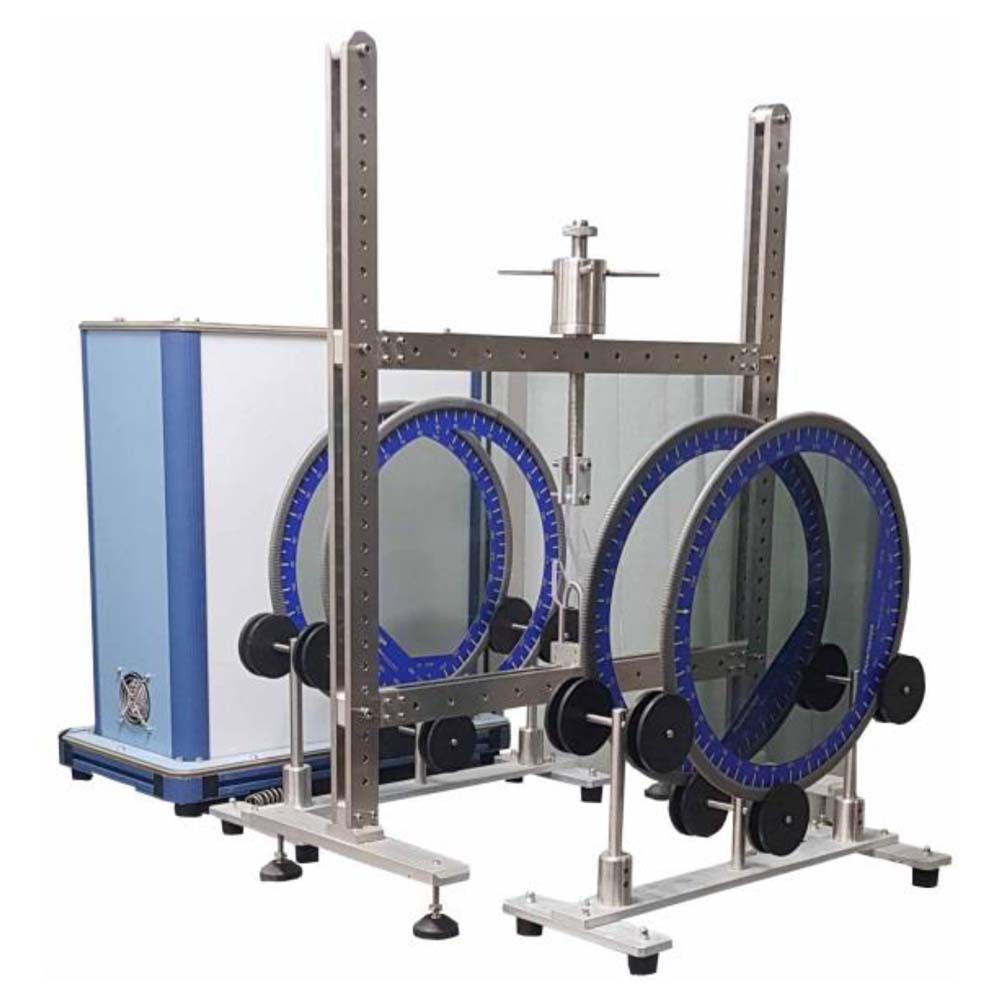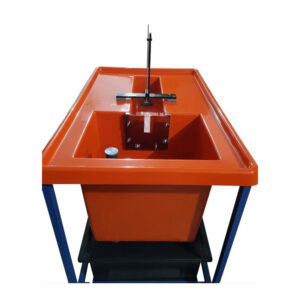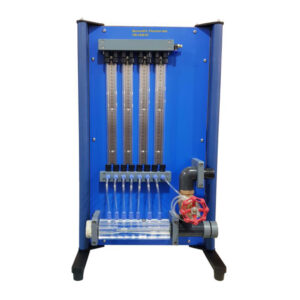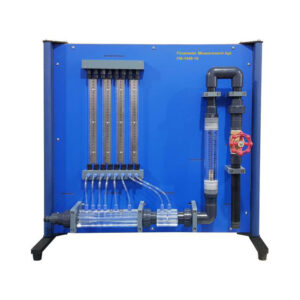For the plane stress state at any specific place in a photo elastic sample, this unit is used to examine and measure the principal stress components and directions of principal stresses using the photo elastic method. A tried and true technique for analysing and capturing mechanical stresses and strains in components is photoelasticity. It is used to display complex stress states and conduct quantitative measurements. Models made of transparent, photoelastically sensitive plastic that becomes optically double-refractive under mechanical loading are utilized as the components. On flat, transparent plastic models, photoelastic studies are carried out using SM-1414. The models are loaded externally and allow circularly polarised light to travel through them. When light enters the body, an analyzer examines it. The following elements make up the experimental setup: a light source, four filters (to provide circularly polarised light), and a frame with load-bearing attachments for the models. The light source offers the option of depicting light and dark contrasts with monochromatic light or coloured stress patterns with white light. Circularly polarised light is produced using a quarter wave plate and polarisation filter. A second quarter wave plate (perpendicular to the first one) and a second polarisation filter are located behind the model. The filters have angle scales and are mounted on spinning bearings. In the frame, various models are mounted. A load application device uses a spindle to apply bending, tensile, or compressive load on the model. The distribution of stress is seen by identifying stresses and strains as bright patches. The order of the dark isochromatics is assessed to ascertain the primary stress difference. Even with custom models, SM-1414 enables flexible experimentation configurations
- Experiments:
- Generation of planar stress states in various models under load
* bending, tensile load, compressive load - Investigation of diffusion of stresses with plane or circular polarised light.
- Interpretation of photoelastic fringe patterns
* stress concentrations, zero points, neutral fibres, areas of constant stress, stress gradients - Determination of occurring stresses and strains visually.
Specifications:
- Representation of mechanical distribution of stress in photoelastic experiments.
- 2 plane polarisation filters as polariser and analyser.
- 2 quarter wave filters to generate circular polarised light.
- All filters with 360° angle scale and marking of the main optical axis.
- White light generated using a fluorescent tube.
- Frame cross-arms height-adjustable. Generation of compression or tension forces by means of a threaded spindle.
- Complete models in polycarbonate (PC) for demonstration purposes available as accessories.
- Filters roller bearing mounted and rotating.
- Monochromatic light (colour yellow) generated using a sodium vapour lamp.




